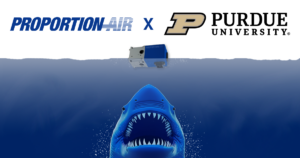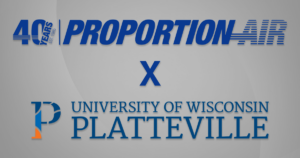Electronic Regulators vs. I/Ps and E/Ps
Just like most industries, manufacturing and industrial automation has a language of its own. There are many acronyms, specialty words and distinct terms to know. Words like actuator, PID (proportional-integral-derivative), and transducer can all be paired with phrases like closed-loop, discrete control and ladder logic.
Two of the most ubiquitous terms that have stood the test of time are I/P (I to P) and E/P (E to P). In fact, both of these terms (and especially I/P) has become the default nomenclature for the larger class of products that includes electronic pressure regulators.
The terms are very simple to understand. The ‘I’ stands for current, the ‘E’ stands for Voltage and the ‘P’ stands for pressure. So, an I/P is an electronic device that converts electric current into a known output pressure and an E/P converts voltage into a known output pressure…Ok, maybe that’s not so simple.
Say for example, you want to control the pressure of compressed air between 0 and 100 psi (pounds per square inch) into a process and all you have is shop air at 110 psi. Sometimes, you need pressure to be 10 psi and sometimes 80 psi, etc. This could be accomplished with a manual (knob style) regulator, but you need to do this remotely. The I and E to Ps can be used to control output pressure in a proportional and linear fashion by sending a 4-20 mA or 0-10 VDC command signal. In this case, 10 psi could be commanded with a 1 VDC signal and 80 psi with an 8 VDC signal. Told you it was simple.
I/Ps and E/Ps have been and continue to be widely used in manufacturing and industrial automation. But,
Are all I/Ps equal?
What are electronic pressure regulators?
How do I decide which to use?
I’m glad you asked. There are many small differences between most I/Ps and Electronic Pressure Regulators (at least those made by Proportion-Air). Those small differences can add up to major design and budget issues if you are not aware of them. Here’s a nice chart breaking down of some of the differences.
|
Proportion-Air’s QB-Series |
I/Ps and E/Ps |
||
|
True closed-loop pressure device. No outside PID loop required. |
Open loop control without on-board sensor. Requires complete PID loop programming for operation. |
||
|
Does not need instrument air. 20-40 Micron filtration – Okay Moisture and Lube Mist – Okay Standard Shop Air – Okay |
Requires instrument air. <5 Micron filtration Moisture and lube mist-Not Okay Standard Shop Air – Not Okay |
||
|
Can be mounted in any position without affecting outlet pressure |
Many are affected by mounting position and require re-calibration around new position |
||
|
Does not require re-calibration |
Most require regular re-calibration |
||
|
Not a constant bleed device, meaning it does not consume air while controlling pressure in a steady state |
Most are constant bleed devices that consume air at all times. If supply air is on, some air is constantly bleeding to atmosphere |
||
|
Does not require pre-regulated air supply (in most cases) |
Requires pre-regulated air supply. Otherwise, pressure fluctuations will affect the control pressure. |
||
|
Has analog output coming from on-board transducer that can be used for data acquisition. |
No analog output available |
||
|
Immune to shock and vibration (tested to 20Gs) |
Pressure output affected by vibration (some more than others) |
||
|
Positive shutoff. Will go to zero psi |
Most do not have a positive shutoff |
Contact us if you have any questions and/or would like application assistance and a quote.

 Purdue’s Mechanical Megalodon Senior Capstone Project Taking Shape
Purdue’s Mechanical Megalodon Senior Capstone Project Taking Shape  University of Wisconsin & Proportion-Air – Manual Regulator Senior Capstone Project Team
University of Wisconsin & Proportion-Air – Manual Regulator Senior Capstone Project Team  February Newsletter: Medical Device Manufacturing
February Newsletter: Medical Device Manufacturing